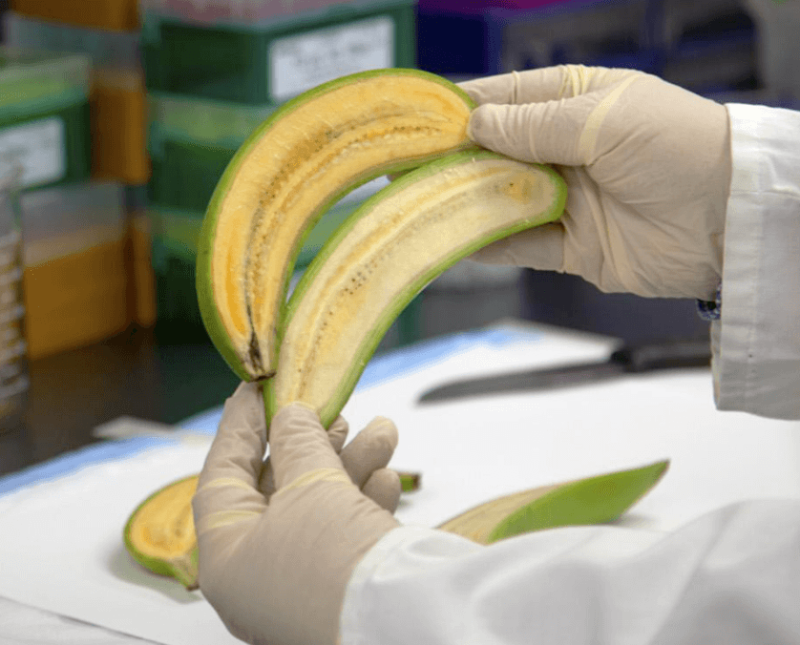Wilberforce Tushemereirwe holds up a genetically modified banana that took millions of dollars and 20 years to make. It contains so much provitamin A, a substance that transforms into vitamin A in the body, that its flesh has a distinctive orange tint.
This “super banana” was created at Uganda’s National Agricultural Research Laboratories (NARL) for the noblest of causes: to save the lives of thousands of children who die in Uganda every year from vitamin A deficiency. Scientists have long crossbred banana plants to improve resistance to pests, fungus, or drought. But fortifying bananas to deliver nutrients to humans who eat them is a first.
The breakthrough is the result of a partnership of the lab in Kawanda, where Tushemereirwe serves as director, James Dale, an Australian agricultural scientist and banana expert, and the Bill and Melinda Gates Foundation, which invested $11 million in one of the longest running research projects the foundation has ever undertaken.
The Ugandan government has tried for decades to solve the problem—with limited success. Distribution of vitamin A capsules, for example, worked well in urban areas but failed to reach those most in need in rural areas. Fortifying maize and wheat flour and edible oils with vitamin A to boost nutritional values proved more effective. But those foods are not consumed in large enough amounts to make a meaningful difference.































